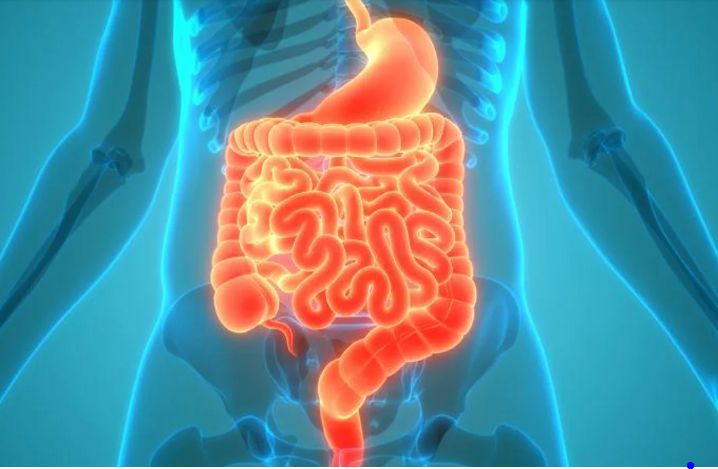TCOYD: All about Carb Counting with Drs. Steve Edelman and Jeremy Pettus
These are 2 great videos (among many others) by TCOYD about carbs, carb counting and how to count fiber in your carb counting. I’ve always said that T1D would be WAY easier to manage if it weren’t for food and needing/wanting to eat! Here’s a little more help …
See More: TCOYD Video Vault
Digestive Organs Vary Widely Between People by Dennis Thompson for HealthDay.com, 24 April 2023.
 People are often reminded that they are their own unique person — and a new study says that’s particularly true of the digestive tract. Dissections of a few dozen deceased individuals revealed striking differences in gastrointestinal anatomy, even among a small group of people. Some livers were larger, some intestines and colons were longer. Crucial discrepancies were observed between men and women. And some organs were even located in the wrong place, the researchers said.
People are often reminded that they are their own unique person — and a new study says that’s particularly true of the digestive tract. Dissections of a few dozen deceased individuals revealed striking differences in gastrointestinal anatomy, even among a small group of people. Some livers were larger, some intestines and colons were longer. Crucial discrepancies were observed between men and women. And some organs were even located in the wrong place, the researchers said.
These variations in anatomy have powerful implications for doctors and patients, the researchers said. Surgery, medical treatments, and even lifestyle choices like diet, are often crafted to best serve an “average” person, but individual human digestive systems are far from average, the study found. “If you’re talking to four different people, odds are good that all of them have different guts, in terms of the relative sizes of the organs that make up that system,” researcher Erin McKenney, an assistant professor of applied ecology at North Carolina State University in Raleigh, explained. Understanding the anatomical differences between people, and the health implications of those differences, could open up an entirely new field of personalized medicine. Key takeaways include:
-
-
- The human digestive tract can vary widely between people in terms of the sizes, lengths and locations of organs, a new study finds
- Women tend to have longer small intestines, while men have longer colons, indicating profound differences in digestion
- These differences could have a significant effect on an individual’s health, particularly if they alter their diet to fit their specific anatomy
-
Addtionally, gut microbiome changes throughout the day and with the seasons. Half of the cells in your body aren’t human — and a new study suggests that many critical to your health oscillate by the hour, day and even the season.
The human body contains about 40 trillion bacteria, viruses and fungi, creating a microbiome that roughly matches the number of human cells one-to-one, said researcher Dr. Amir Zarrinpar, an assistant professor of gastroenterology at the University of California, San Diego. His team has discovered that the microbes of the gut microbiome are constantly changing throughout the day, and even change with the seasons, which can potentially explain “why we are predisposed to seasonal diseases and whether the microbiome primes us for that. And not only that, they can influence how researchers study the microbiome and how our research could be affected by these variations in the microbiome.”
Read more:
Controlling Diabetes in the Hospital with endocrinologist Tricia Santos, MD, for TCOYDthePodcast.transistor.fm, 10 April 2023.
Whether planned or unexpected, a visit to the hospital can cause added stress when managing diabetes—and it’s important to advocate for yourself to get the right care. Dr. Pettus is sitting down with in-patient hospital management expert, Dr. Tricia Santos, to discuss what people with diabetes need to know when going into the hospital. They’ll cover how medication doses may adjust, the ability to use devices, and how to capitalize on all the extra time spent around doctors!
Diabetes and Edentulism in Older Adults Can Accelerate Cognitive Decline by Allison Nguyen for EndocrinologyAdvisor.com, 21 April 2023.
 Older adults with diabetes and edentulism (def: Edentulism is the state of being without natural teeth) have accelerated rates of cognitive decline, according to study findings published in the Journal of Dental Research. Previous research has identified diabetes as a risk factor for cognitive decline. Additionally, there is increasing research regarding the bidirectional influence of diabetes and poor oral health.
Older adults with diabetes and edentulism (def: Edentulism is the state of being without natural teeth) have accelerated rates of cognitive decline, according to study findings published in the Journal of Dental Research. Previous research has identified diabetes as a risk factor for cognitive decline. Additionally, there is increasing research regarding the bidirectional influence of diabetes and poor oral health.
Overall, having diabetes was associated with worsened cognitive function in adults aged 65 to 74 years and 75 to 84 years. The only age group where having both diabetes and edentulism accelerated cognitive decline were patients aged 65 to 74 years. “From a public health perspective, our study demonstrates the importance of improving access to dental health care and integrating primary dental and medical care in older adults,” the researchers noted.
Bottom line: Be sure to get/continue to access dental health care for your long-term cognition!
Second BOTTOM LINE: GO TO THE DENTIST, REGULARLY!!!
Diabetes and Edentulism in Older Adults Can Accelerate Cognitive Decline
Even I’m blown away hearing how complex managing blood sugar is for us with type 1 diabetes by Riva Greenberg for DiabetesStories.com, 25 April 2023.
 Riva and I are a sort of “twins.” We are the same age, from New York, her husband is from the Netherlands and my first husband spoke Dutch (I know … a stretch!) and we lived the same number of years with Type 1 diabetes. That adds up to enough in common for twins! And she also blogs! Her words resonate with me: I’m overwhelmed by the complexity of what I do every single day, my best to keep my blood sugar between my own set targets, 75 and 150 mg/dl. I’m relieved someone gets it.
Riva and I are a sort of “twins.” We are the same age, from New York, her husband is from the Netherlands and my first husband spoke Dutch (I know … a stretch!) and we lived the same number of years with Type 1 diabetes. That adds up to enough in common for twins! And she also blogs! Her words resonate with me: I’m overwhelmed by the complexity of what I do every single day, my best to keep my blood sugar between my own set targets, 75 and 150 mg/dl. I’m relieved someone gets it.
She shares a video interview with Dr. Jody Stanislaw who’s been educating and counseling T1Ds for many years.
ABOUT HAIR … interesting!
Study links ‘stuck’ stem cells to hair turning gray by NYU Langone Health for Phys.org, 19 April 2023.
Hair-coloring stem cells (at left, in pink) need to be in the hair germ compartment in order to be activated (at right) to develop into pigment.
Certain stem cells have a unique ability to move between growth compartments in hair follicles, but get stuck as people age and so lose their ability to mature and maintain hair color, a new study shows. Led by researchers from NYU Grossman School of Medicine, the new work focused on cells in the skin of mice and also found in humans called melanocyte stem cells, or McSCs. Hair color is controlled by whether nonfunctional but continually multiplying pools of McSCs within hair follicles get the signal to become mature cells that make the protein pigments responsible for color.
Published in the journal Nature on April 19, the new study showed that McSCs are remarkably plastic. This means that during normal hair growth, such cells continually move back and forth on the maturity axis as they transit between compartments of the developing hair follicle. It is inside these compartments where McSCs are exposed to different levels of maturity-influencing protein signals.
Specifically, the research team found that McSCs transform between their most primitive stem cell state and the next stage of their maturation, the transit-amplifying state, depending on their location.
The researchers found that as hair ages, sheds and then repeatedly grows back, increasing numbers of McSCs get stuck in the stem cell compartment called the hair follicle bulge. There, they remain, do not mature into the transit-amplifying state and do not travel back to their original location in the germ compartment, where WNT proteins would have prodded them to regenerate into pigment cells.
“Our study adds to our basic understanding of how melanocyte stem cells work to color hair,” said study lead investigator Qi Sun, Ph.D., a postdoctoral fellow at NYU Langone Health. “The newfound mechanisms raise the possibility that the same fixed-positioning of melanocyte stem cells may exist in humans. If so, it presents a potential pathway for reversing or preventing the graying of human hair by helping jammed cells to move again between developing hair follicle compartments.”
Read more: Study links ‘stuck’ stem cells to hair turning gray
♥♥♥♥♥♥♥♥♥♥♥♥♥♥♥♥♥♥♥♥♥♥♥♥♥♥♥♥♥♥♥♥♥♥♥♥♥♥♥♥♥♥♥♥♥♥♥♥
A harrowing study of 46,000 women shows hair dyes are heavily associated with cancer by Arianne Cohen for FastCompany.com, 4 December 2019.
 A study in the Journal of Cancer tracked 46,709 women ages 35-74 over eight years. The results are particularly harrowing for black women: those who used permanent dyes at least every 5-8 weeks had a 60% higher risk of developing breast cancer than those who did not; white women were 8% more likely to develop breast cancer.
A study in the Journal of Cancer tracked 46,709 women ages 35-74 over eight years. The results are particularly harrowing for black women: those who used permanent dyes at least every 5-8 weeks had a 60% higher risk of developing breast cancer than those who did not; white women were 8% more likely to develop breast cancer.
Chemical straighteners also proved problematic: Women who used straighteners every 5-8 weeks were 30% more likely to develop breast cancer. Straighteners are much more commonly used among black women. (In the study, 74% of black women had, versus 3% of white women.)
This, of course, creates an immediate grooming crisis for those feeling career pressure to look eternally young. You can see helpful photos of 14 people with their hair both dyed and gray (hint: the gray-heads look fine!), and here’s how to go gray.
Read more: Hair dyes are heavily associated with cancer



As my father used to say, almost 80% of all Americans die in hospitals. Moral to the story? Stay the hell out of hospitals. yeah no kidding. Especially if you have T1D.
I find the article on people digestive system so interesting. I know my gastro doctor says my colon is the size of Louisiana. I am told that is large. But I said doc I think I want it to be the size of CA. He does not find me funny.